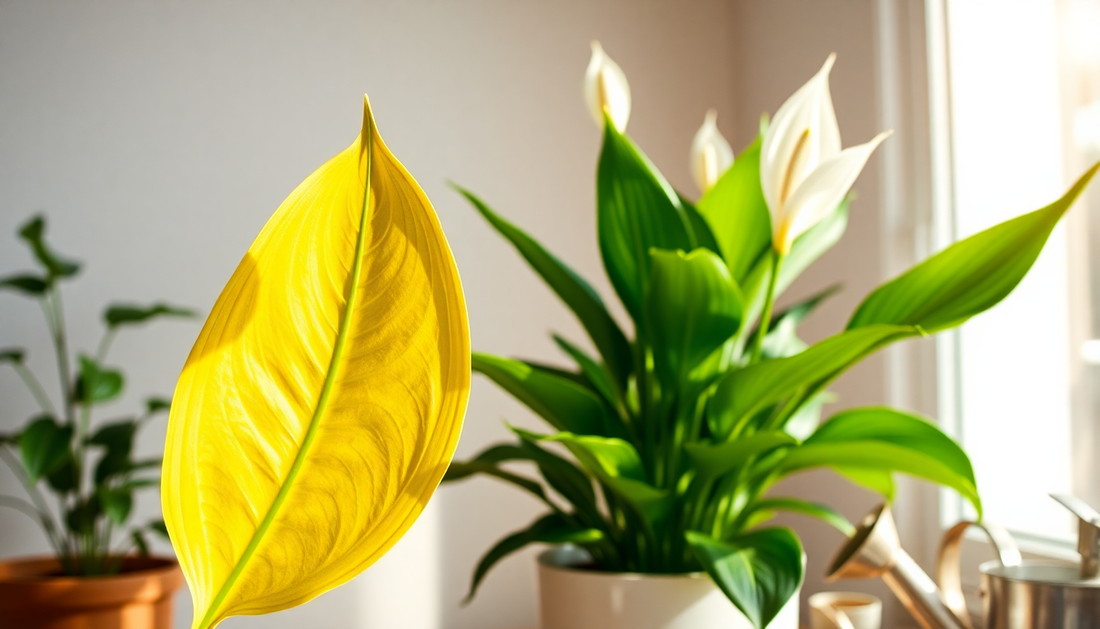
Reviving Your Peace Lily: Tips to Tackle Yellowing Leaves
As a dedicated plant enthusiast, I've come to appreciate the beauty and resilience of the peace lily (Spathiphyllum). These elegant, low-maintenance houseplants are a popular choice for their ability to thrive in a variety of indoor environments. However, one common issue that many peace lily owners face is the dreaded yellowing of leaves. If you're struggling with this problem, fear not – I'm here to share my expertise and guide you through the process of reviving your peace lily back to its lush, vibrant self.
Understanding the Causes of Yellowing Leaves
Yellowing leaves in a peace lily can be caused by a variety of factors, and it's important to identify the root cause in order to address the issue effectively. Here are some of the most common reasons why your peace lily's leaves may be turning yellow:
Overwatering
One of the most common reasons for yellowing leaves in peace lilies is overwatering. These plants are sensitive to excess moisture and can quickly develop root rot if they're kept in constantly wet soil. Overwatering can lead to the leaves turning yellow and wilting, as the plant struggles to absorb the necessary nutrients and oxygen.
Underwatering
On the flip side, underwatering can also cause the leaves of a peace lily to turn yellow. When the plant doesn't receive enough water, it goes into survival mode, prioritizing the health of the roots and newer growth over the older, outer leaves.
Nutrient Deficiencies
Inadequate or imbalanced nutrient levels in the soil can also contribute to yellowing leaves. Peace lilies require a specific balance of nutrients, such as nitrogen, phosphorus, and potassium, to maintain their vibrant foliage.
Lack of Light
Peace lilies thrive in bright, indirect light, and a lack of sufficient light can cause the leaves to turn yellow and become stunted in growth.
Temperature Stress
Extreme temperature fluctuations, either too hot or too cold, can also stress the peace lily and lead to yellowing leaves.
Pests or Disease
In some cases, yellowing leaves may be a sign of a pest infestation or a fungal or bacterial disease affecting the plant.
Reviving Your Peace Lily
Now that we've identified the potential causes of your peace lily's yellowing leaves, let's dive into the steps you can take to revive your plant:
1. Assess the Watering Needs
The first step is to determine if your peace lily is being over or underwatered. Check the soil moisture by sticking your finger into the potting mix. If the soil is consistently wet or soggy, it's likely that you're overwatering. If the soil is dry to the touch, it's time to water your plant.
To correct the watering issue, adjust your watering schedule accordingly. For overwatered plants, allow the soil to partially dry out before watering again. For underwatered plants, water thoroughly, ensuring that the entire root zone is saturated.
2. Fertilize Appropriately
Peace lilies benefit from regular fertilization to maintain optimal nutrient levels. Choose a balanced, water-soluble fertilizer and apply it according to the manufacturer's instructions. Avoid over-fertilizing, as this can also lead to leaf yellowing.
3. Provide Adequate Lighting
Ensure that your peace lily is receiving the right amount of light. Place the plant in a spot that receives bright, indirect sunlight for at least 6 hours a day. Avoid direct sunlight, as it can scorch the leaves.
4. Monitor Temperature and Humidity
Peace lilies prefer a consistent temperature between 65°F and 85°F (18°C to 29°C). Avoid exposing the plant to sudden temperature changes or drafts, as this can stress the plant and cause the leaves to turn yellow.
Additionally, peace lilies thrive in humid environments. If the air in your home is particularly dry, consider using a pebble tray or a humidifier to increase the humidity around your plant.
5. Check for Pests or Diseases
Carefully inspect your peace lily for any signs of pests, such as spider mites, mealybugs, or scale insects. These can cause the leaves to turn yellow and eventually lead to the plant's decline. If you suspect a pest problem, treat the plant with an appropriate insecticidal soap or neem oil solution.
Similarly, be on the lookout for any fungal or bacterial diseases that may be affecting your peace lily. Symptoms like leaf spots, wilting, or discoloration could indicate a disease, and you may need to treat the plant with a fungicide or adjust the growing conditions to address the issue.
6. Prune Affected Leaves
Once you've identified and addressed the underlying cause of the yellowing leaves, it's time to prune the affected foliage. Use clean, sharp scissors or pruners to snip off the yellow or damaged leaves at the base of the stem. This will encourage the plant to focus its energy on producing new, healthy growth.
7. Be Patient and Consistent
Reviving a peace lily with yellowing leaves takes time and consistent care. Be patient and continue to monitor your plant's progress, adjusting the watering, fertilizing, and environmental conditions as needed. With the right care, your peace lily will bounce back and regain its lush, vibrant appearance.
Remember, every plant is unique, and the specific steps required to revive your peace lily may vary. Pay close attention to your plant's needs and be willing to experiment to find the right balance of care. By following these tips and troubleshooting the underlying issues, you'll be well on your way to restoring the health and beauty of your beloved peace lily.
Conclusion
Yellowing leaves in a peace lily can be a frustrating problem, but with the right approach, you can revive your plant and enjoy its stunning foliage once again. By understanding the common causes of this issue and implementing the appropriate care strategies, you'll be able to keep your peace lily thriving for years to come. Remember, patience and consistent care are key to maintaining the health and vitality of these beautiful indoor plants.
Happy gardening!







No comments